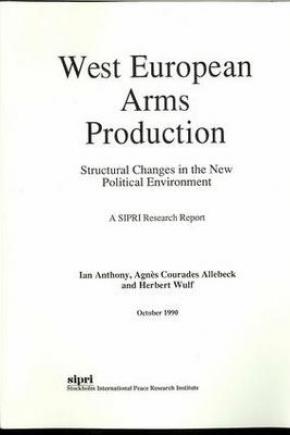West European Arms Production: Structural Changes in the New Political Environment
The arms industry in most parts of the world is faced with a challenge: the reduction of production capacities. Difficulties in utilizing arms production capacities have occurred in the past, but they were of short-term nature and were solved by increasing domestic procurement or additional exports. In the present situation neither increasing domestic military expenditure nor arms exports is a viable strategy. During the cold war, arms procurement was linked to a European security environment that has changed beyond recognition in the past two years. With the transformation of the Warsaw Treaty Organization, there remains no justification for sustaining arms production capacities sufficient to support a 'clash of the Titans' in Europe. The available evidence suggests that industrialists have been quicker to react to events than either academics or politicians. The changed situation has already stimulated responses from companies with interests in arms production. Governments have been slower to respond, and some continue to hold on to traditional policies with minor adjustments.
This research report analyzes the situation of the arms industry in Europe—both for NATO and for neutral and non-aligned countries—and predicts that cuts in arms production capacity and employment in the arms industry of at least 15 and possibly 33 per cent can be expected by the mid-1990s. The report concludes that current policies of arms procurement can be only temporary measures. In the medium and long term a fundamental revision of force planning is required, in particular if governments are to fulfill their pledge to continue conventional arms control negotiations beyond a first Conventional Armed Forces in Europe (CFE) agreement.
2. Introduction: The political and economic background
3. The state of the industry: Over-capacities and the need for reductions
Herbert Wulf
4. Through the looking glass: Conventional arms control and West European arms industry
Ian Anthony
5. The role of the European organizations in the arms industry
Agnès Courades Allebeck
6. The future of the industry: A prognosis
Ian Anthony and Herbert Wulf
Appendix B. Definitions of Treaty Limited Items and items covered by the CFE Treaty
Ian Anthony


